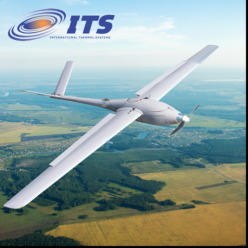
Its Drone
WAUWATOSA, Wis. – Feb. 26, 2023 – PRLog — Drones or Unmanned Aerial Vehicles (UAVs) were initially used as military devices. Still, their use in commercial applications has grown over the past five years. As a result, the drone industry expects to grow at 15.37% CAGR over the next five years. The entire industry is worth just a little less than $130 billion. The delivery drone stats, along with those in agriculture, construction, and other sectors, make this number possible.
The agricultural industry uses drones to survey their extensive acreage, making this drone market worth $32 billion. Almost 25% of all construction sites in the US use drones. This market is around $5 billion. Drone sales statistics for the government say that they will spend almost $18 billion in the next ten years through the purchase USA of 1000 UAVs. These are not just for military applications, but in the city too, police drone statistics say.
Aerial drones are manufactured with a combination of different materials and composite parts. Some common materials used in the construction of drones include carbon fiber, fiberglass, and various plastics. These composite materials build lightweight bodies, winds, and tails. Because drones fall under FAA regulations, they need to be structurally sound and not fail. Therefore, choosing the right industrial oven to cure, dry, or bake composite materials is critical in manufacturing drones. There are several options available. Here is a brief overview of ovens.
Industrial ovens heat composite materials for various manufacturing applications, including drones. The heating process usually involves exposing the composite material to a controlled temperature and humidity environment for a specific period. This process hardens or strengthens the material and removes any excess moisture that might be present in the material.
The specific type of industrial oven used for heating composite drone parts will depend on the composition of the material, the size and shape of the pieces, and the desired outcome of the heating process. Some common industrial ovens used for this purpose include conveyor ovens, batch ovens, and continuous ovens.
Conveyor ovens heat large production of composite parts placed on a conveyor belt that moves through the oven chamber and allows for continuous heating and cooling of the parts.
Batch ovens heat smaller production pieces or those too large or irregularly shaped to be moved on a conveyor belt. In these ovens, the parts are placed in a chamber, the door is closed, and the heating process begins.
Continuous ovens move workpieces steadily through the heating chamber and allow the processing of many parts while they remain continuously moving.
All ovens are calibrated to the composite material that you use. The oven needs control over temperature, humidity, and pressure to give the desired results in terms of final strength and surface quality. That’s why industrial ovens are built custom to a specific application.
Companies, including aerospace, automotive, and sporting goods, now depend on ITS’ Composite Curing Ovens to cure their high-strength, low-weight carbon composite materials. The need for custom ovens for the composite industry is why International Thermal Systems has worked hard to gain a solid reputation for developing custom solutions for their customers.
ITS’ thermal airflow design experts design, build and install custom ovens renowned for their temperature uniformity and state-of-the-
ITS’ complete out-of-autoclave curing system includes a carbon fiber oven, integrated multi-port vacuum system, and process controller to maintain tight temperature uniformity.
Our state-of-the-
In addition to the features listed below, the ITS out-of-autoclave composite curing oven has other design and customization options described in our downloadable brochure. (https://r20.rs6.net/
Why ITS?
We’re recognized worldwide for delivering on our promises to produce, install, train, and maintain custom out-of-autoclave (OOA) composite curing ovens that provide the most economical and reliable solutions for meeting complex composite processing requirements.
Whether purchasing a standard model or a customized solution, clients who have purchased an ITS composite curing oven speak highly about our design and engineering capabilities and the attention we pay to after-the-sale training and troubleshooting. And at the C-Suite level, you’ll hear our customers say that the combination of price, performance, and customer service confirms that they made the right choice in selecting an ITS Composite Curing Oven.
Contact us today to discuss your project or start your quote process online. (https://r20.rs6.net/
